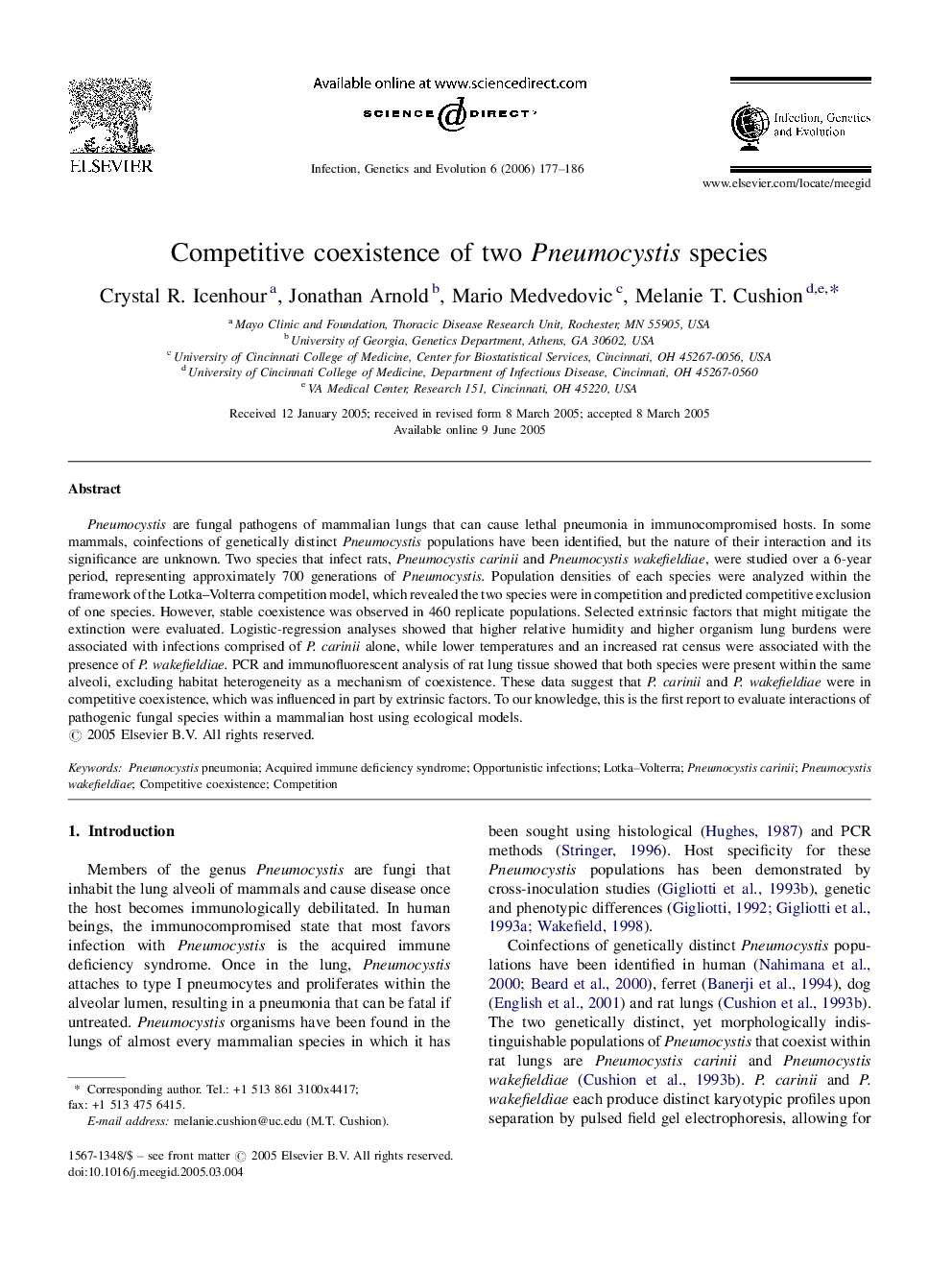| Article ID | Journal | Published Year | Pages | File Type |
|---|---|---|---|---|
| 2823701 | Infection, Genetics and Evolution | 2006 | 10 Pages |
Pneumocystis are fungal pathogens of mammalian lungs that can cause lethal pneumonia in immunocompromised hosts. In some mammals, coinfections of genetically distinct Pneumocystis populations have been identified, but the nature of their interaction and its significance are unknown. Two species that infect rats, Pneumocystis carinii and Pneumocystis wakefieldiae, were studied over a 6-year period, representing approximately 700 generations of Pneumocystis. Population densities of each species were analyzed within the framework of the Lotka–Volterra competition model, which revealed the two species were in competition and predicted competitive exclusion of one species. However, stable coexistence was observed in 460 replicate populations. Selected extrinsic factors that might mitigate the extinction were evaluated. Logistic-regression analyses showed that higher relative humidity and higher organism lung burdens were associated with infections comprised of P. carinii alone, while lower temperatures and an increased rat census were associated with the presence of P. wakefieldiae. PCR and immunofluorescent analysis of rat lung tissue showed that both species were present within the same alveoli, excluding habitat heterogeneity as a mechanism of coexistence. These data suggest that P. carinii and P. wakefieldiae were in competitive coexistence, which was influenced in part by extrinsic factors. To our knowledge, this is the first report to evaluate interactions of pathogenic fungal species within a mammalian host using ecological models.
